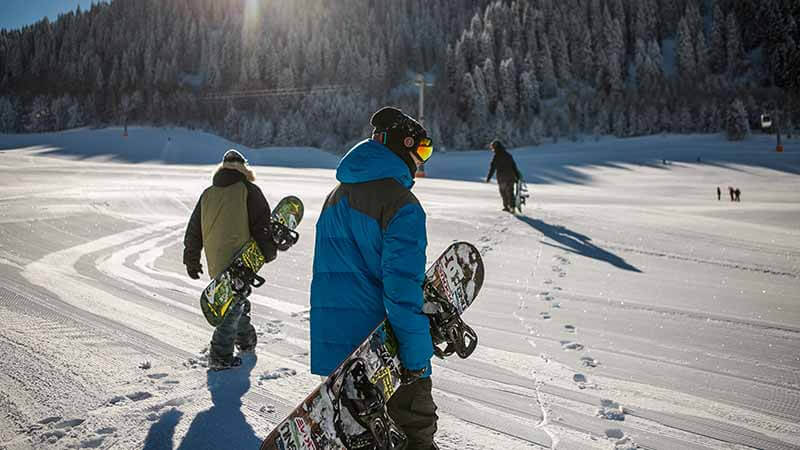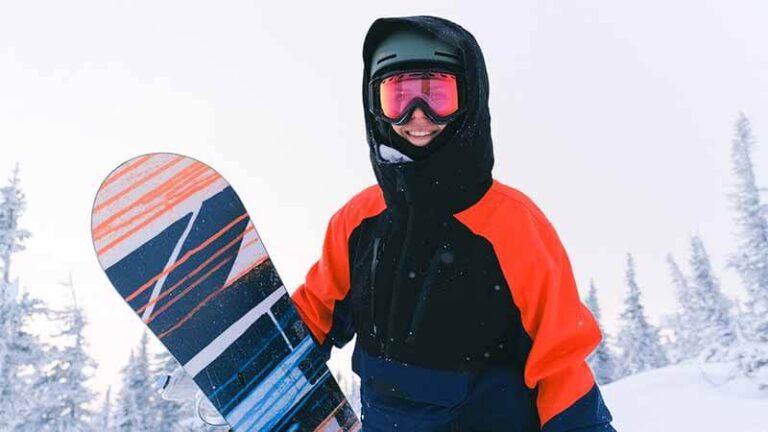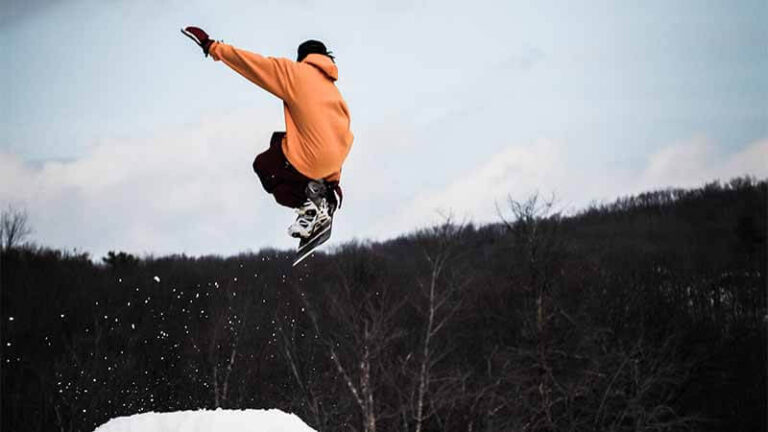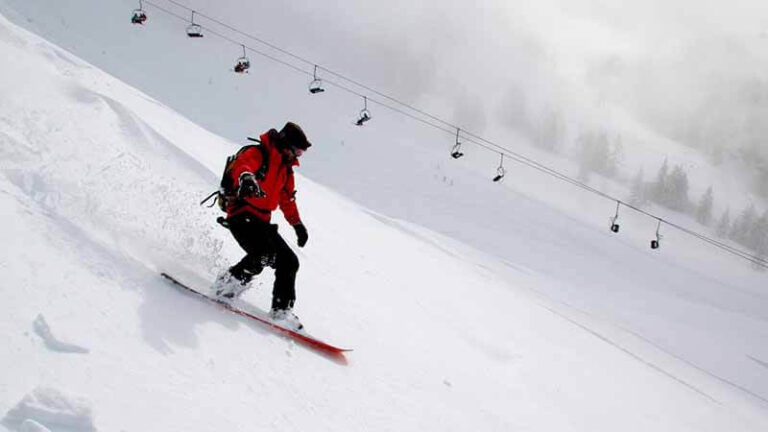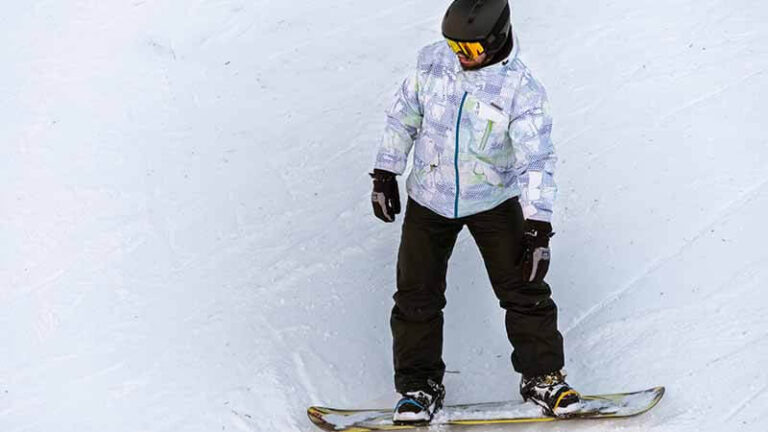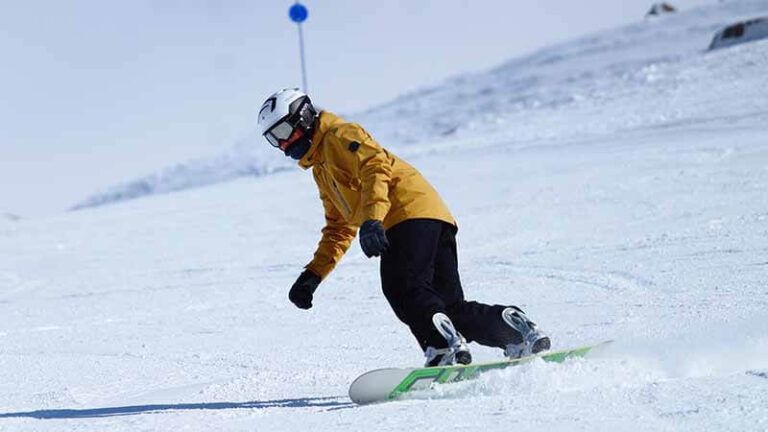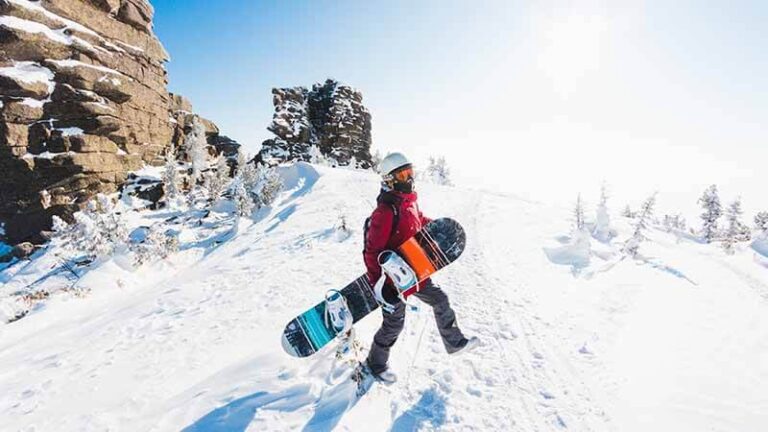10 Essential Snowboarding Tips for Beginners
Introduction
Snowboarding is an exciting winter activity that has grown in popularity over time. It consists of sliding down snow-covered slopes on a snowboard while the rider’s feet are secured to the board with bindings. Snowboarding, like skateboarding, surfing, and skiing, necessitates balance, control, and agility.
While snowboarding can be a lot of fun, it can also be dangerous if safety precautions are not followed. This is especially true for novices who are just getting started in the sport. As a result, it’s critical for beginners to grasp the fundamentals before attempting more difficult techniques. Beginners can build the essential skills and confidence to snowboard safely and enjoyably by mastering the fundamentals.
As a result, this article will present 10 key snowboarding pieces of advice for beginners to assist them in learning the fundamentals and improving their skills. These pointers will cover everything from choosing the correct equipment to mastering fundamental techniques, allowing beginners to develop safely and successfully on the slopes. Beginners can learn to snowboard safely and enjoyably by following these recommendations.
What are the Essential Snowboarding Tips for Beginners?
Here are my top tips for snowboarding beginners to enjoy their ride while being safe,
Tip 1: Get Proper Gear
For novices to have a safe and fun experience on the slopes, correct snowboarding equipment is important. The proper equipment will not only keep you comfortable but will also allow you to perform better and reduce your chance of injury.
Wearing good snowboarding equipment is vital since it can protect you from cold weather, falls, and accidents. Helmets, goggles, coats, pants, gloves, boots, and snowboards are all part of the snowboarding equipment. Each piece of equipment serves a unique purpose and can significantly improve your performance and safety.
The essential piece of equipment required for snowboarding is a snowboard, which comes in a variety of shapes and sizes. Snowboard boots and bindings, which hold your feet to the board and give control and support while riding, are other essential pieces of equipment. Finally, a helmet is an important piece of safety equipment that can avoid major head injuries in the event of a fall or collision.
Fit and function are the two most critical elements to consider when purchasing snowboarding equipment. The gear should be well-fitting, comfortable, and not hinder your movement. It should also be suited for the conditions you’ll be riding in. For example, if you’re riding in wet snow, you’ll need a waterproof jacket and pants. When choosing a snowboard, consider your ability level as well as the terrain you’ll be riding on.
To summarize, obtaining the proper snowboarding equipment is critical for beginners to have a safe and fun experience. You may enjoy a more comfortable and confident ride on the slopes by investing in quality gear that fits well and is suited for your skill level and riding circumstances.
Tip 2: Learn How to Fall
Falling is an unavoidable part of learning to snowboard, and beginners must learn how to fall properly to avoid harm. Falling is an unavoidable part of the snowboarding learning process. It is normal for a beginner to fall multiple times as they strive to establish their balance and learn new techniques. Falling indicates that you are pushing your boundaries and attempting new things, which is how you will enhance your skills.
Learning how to fall safely when snowboarding can help you avoid catastrophic injuries. The first step is to remain calm and attempt to go with the flow of the fall. If you lose your equilibrium, hunch down and roll onto your back or shoulder. This can assist distribute the impact of the fall and protect your head and neck from harm. Avoid extending your arms to break the fall as this can result in wrist injuries.
It’s critical to get back up fast after a fall to avoid being in the way of other riders or being hit by other snowboarders. Sit up and face uphill with your board pointed downward to get back up. Then, with your hands on the snowboard, raise yourself to a kneeling position. Finally, to avoid sliding backward, rise up with your weight on your front foot and pivot your board perpendicular to the slope.
To summarize, understanding how to fall safely is a critical skill for beginners to master. You can avoid catastrophic injuries while snowboarding by being relaxed, rolling with the fall, and avoiding using your arms to break the fall. Furthermore, understanding how to swiftly get back up after a fall will help you stay safe and avoid mishaps on the slopes.
Tip 3: Master the Basics
Mastering the fundamentals is an essential step for novices looking to advance their snowboarding abilities. The three fundamental techniques that form the backbone of snowboarding are stance, balance, and turning. The way you place your body on the snowboard is referred to as your stance. To maintain a correct stance, keep your knees slightly bent, your weight centered over the board, and your shoulders and hips parallel to the board.
The capacity to retain stability while riding is referred to as balance. This entails maintaining your core engaged, your weight evenly distributed, and your eyes on the terrain ahead of you. The capacity to maneuver the snowboard in multiple directions is referred to as turning. This entails shifting your weight to the snowboard’s toes or heels to initiate spins and controlling the board’s edges.
Before trying more difficult maneuvers, beginners must learn these fundamental techniques. This is due to the fact that advanced movements build on the foundation of basic skills. It’s difficult to advance your talents and safely attempt more complex maneuvers without a solid foundation. By learning the fundamentals, you’ll be able to ride more securely, get better control of your snowboard, and adapt to diverse terrain and snow conditions.
Tip 4: Take a Lesson
For beginners, taking a snowboarding lesson from a competent instructor can be a game changer. A skilled instructor can provide you with individualized feedback, tailor the course to your skill level and goals, and assist you in avoiding undesirable habits. A teacher can also teach you methods and strategies that are tough to learn on your own. An instructor can also assist you in developing confidence, being safe, and making the most of your time on the slopes.
There are various types of lessons available for both children and adults, ranging from group lessons to private lessons. Novices should begin with group sessions, which are frequently less expensive and allow you to learn alongside other beginners. It is critical that you choose a lesson that is appropriate for your ability level and goals. Look for lessons that are specifically tailored for beginners, and pick one that fits your learning style and degree of comfort.
Arrive early, dress appropriately, and bring all necessary equipment to make the most of your snowboarding session. Listen to your instructor, ask questions, and concentrate on putting the skills and recommendations you’ve learned into practice. Be open to comments and don’t give up if you’re having trouble with a certain talent. Be patient with yourself and remember that learning to snowboard requires time and practice.
A professional snowboarding class is a wonderful way for novices to improve their skills and stay safe on the slopes. You may expedite your learning curve and establish a lifelong love of snowboarding by choosing the perfect lesson depending on your ability level and goals, and making the most of your time with an instructor.
Tip 5: Practice on Easy Terrain
For novices, practicing on easy terrain is essential for improving their snowboarding skills. Beginning on easier terrain allows newcomers to become acquainted with the fundamentals, gain confidence, and avoid injury. Gentle slopes, few impediments, and vast, open spaces are typical of easy terrain. This allows beginners to focus on their technique and lay the groundwork for more difficult terrain in the future.
It is critical to choose a trail that is appropriate for your skill level. Trails are often identified using a color code system, with green being the simplest, blue being the next easiest, and black being the most difficult. Beginners should stick to green tracks until they have learned the fundamentals of turning and stopping. It’s also critical to keep an eye out for trail conditions like ice and snow depth, which might impair your ability to handle the board.
Focus on the fundamentals when practicing on easy terrains, such as keeping a solid stance, transferring weight, and managing the board’s edges. It’s also necessary to practice turning and stopping because these are the most important abilities for novices. When turning, maintain your shoulders and hips downhill and use your toes and heels to redistribute your weight and control the direction of the board. Instead of leaning back and placing pressure on the tail of the board, use the board’s edges to slow down.
Tip 6: Look Ahead
When snowboarding, it’s critical to predict what’s coming up on the terrain. Looking ahead is vital while snowboarding for various reasons. It assists you in anticipating hazards, adjusting your pace, and maintaining board control. You can spot potential hazards such as trees, rocks, or other snowboarders by evaluating the terrain ahead of you and making the required modifications to avoid them.
When surveying the terrain, keep your gaze forward rather than down at the board. Keep your head up and your gaze forward, scanning from side to side to see what’s next. It’s also critical to keep an eye out for other snowboarders and skiers, especially when crossing tracks or combining with other trails. Finally, keep an eye out for changing weather and snow conditions, since these might have an impact on the terrain and your ability to manage the board.
For beginners, maintaining balance and control while gazing ahead might be difficult. Focus on keeping a proper stance and changing weight as needed to modify your speed and direction to enhance this talent. Turn practice is also beneficial since it lets you see ahead while retaining control of the board. When turning, strive to keep your torso facing downhill while shifting your weight and controlling the direction of the board with your toes and heels.
Tip 7: Use Your Body to Control Your Board
When snowboarding, your body motions are extremely important in controlling the board. You must change your weight and use your body position to control your board. To turn the board, for example, shift your weight onto your toes or heels and twist your body in the desired direction. To come to a complete stop, position your torso perpendicular to the board and apply pressure to the board’s edges with your feet.
When transferring your weight, move it gradually and smoothly. This will allow you to keep control of the board while avoiding unexpected movements that could throw you off balance. To turn, twist your upper body in the desired direction and shift your weight onto your toes or heels. To come to a complete stop, position your torso perpendicular to the board and apply pressure to the board’s edges with your feet.
It takes practice to maintain balance and control through bodily motions. Maintaining a decent posture, with your weight centered over the board and your knees bent, is critical. To maintain balance, keep your upper body facing downhill and your arms in front of you when turning. When coming to a complete stop, spread your weight evenly across the board and keep your body erect.
Tip 8: Ride with Confidence
Riding with confidence is essential for snowboarding. You are more likely to enjoy the sport and enhance your talents if you have confidence. Confidence is essential in snowboarding because it allows you to make split-second judgments and execute tricks with pinpoint accuracy. When you’re confident, you’re less inclined to pause, which can result in slips or missed opportunities.
Practice is one of the finest methods to gain confidence on the slopes. The more you snowboard, the more at ease you’ll be on the board. Take it one step at a time, starting with gentler terrain and progressing to more difficult runs as you gain confidence. Another useful idea is to create realistic goals for yourself, such as learning a new trick or completing a difficult run without falling. Small victories along the road might help generate momentum and confidence.
If you’re nervous or afraid on the slopes, there are tactics you can do to help you overcome those feelings. Visualization, which involves envisioning yourself successfully completing a maneuver or run, is one effective strategy. Another strategy is to concentrate on your breathing, taking deep, slow breaths to relax and center yourself. Finally, try to stay in the current moment and avoid getting caught up in negative thoughts or anxieties about the future.
Tip 9: Take Breaks and Stay Hydrated
It is critical to take breaks and stay hydrated while snowboarding in order to be safe, comfortable and energized on the slopes. Snowboarding is a physically demanding sport that needs a significant amount of energy and stamina. Taking frequent rests and staying hydrated helps you avoid weariness, minimizes your chance of injury, and keeps you comfortable under changing weather conditions.
Dressing in layers is one of the best methods to be warm and comfortable on the slopes. This allows you to change your apparel as the weather changes throughout the day. Invest in high-quality snowboarding equipment that is designed to keep you warm and dry. Wear gloves, a cap, and a face mask or neck gaiter to protect yourself from the cold.
Staying hydrated is essential for snowboarding because it prevents cramping and exhaustion. Drink lots of water during the day, and bring a water bottle with you when you hit the slopes. It’s also critical to fuel your body with nutritious foods like fruits, vegetables, and whole grains. You can also bring foods like energy bars or trail mix with you on the slopes to keep your energy levels up.
Tip 10: Have Fun
It’s critical to remember to have fun while snowboarding after learning the 10 fundamental snowboarding advice for beginners. Before hitting the slopes, go over the 10 essential snowboarding tips for beginners, which include getting the right equipment, learning how to fall, mastering the basics, taking a lesson, practicing on easy terrain, looking ahead, using your body to control your board, riding with confidence, taking breaks and staying hydrated, and, most importantly, having fun.
Snowboarding is an exciting and exhilarating activity that individuals of all ages and ability levels can enjoy. It is critical to remember that the purpose of snowboarding is to have fun rather than to become a professional athlete overnight. The most important thing is to have fun, whether you’re riding down basic courses or learning complicated feats.
Focus on developing your abilities and doing new things to make the most of your snowboarding experience. Every time you hit the slopes, challenge yourself to try a new run or maneuver and celebrate your progress and triumphs. Consider going snowboarding with friends or joining a local snowboarding club to meet like-minded people and share the experience.
Conclusion
To summarize, snowboarding is a popular winter sport that people of all ages and skill levels may enjoy. Before trying more complicated maneuvers, beginners should understand the fundamentals and practice the necessary skills.
Beginners can learn to snowboard safely and effectively by following the suggestions listed above. Remember that snowboarding is a fun and thrilling activity, and the most important thing is to enjoy yourself. The key to effective snowboarding is to concentrate on learning the fundamentals, developing necessary skills, and having fun. Anyone can become a competent and confident snowboarder with time and practice. So gather your equipment, hit the slopes, and have a great day!
Read More;

